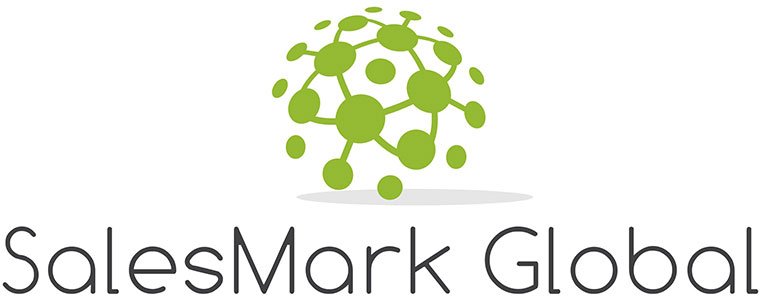Conversion Rate Optimization (CRO) is the act of enhancing the percentage of users who perform the actions you want- signing up, scheduling a demonstration, or even upgrading to a paid membership.
CRO is a key ingredient to long-term success in the SaaS business model, where growth is based on recurring revenue and user engagement. Since customer acquisition costs (CAC) have been increasing, and competition is getting fierce, a leaky funnel is unacceptable in SaaS businesses.
This article will discuss the importance of CRO tools, briefly identify the most effective CRO tool categories and tools in 2025, as well as offer a list of suggestions on maximizing CRO tools to drive growth both measurably and quantifiably.
Table of Contents
1. Why CRO Tools Are Essential for SaaS Businesses
2. Best CRO Tools for SaaS in 2025
2.1. A/B Testing & Experimentation
2.1.1. Optimizely
2.1.2. VWO (Visual Website Optimizer)
2.2. Analytics & Behavior Tracking
2.2.1 Google Analytics 4 (GA4)
2.2.2. Mixpanel
2.3. Heatmaps & Session Recording
2.3.1. Hotjar
2.3.2. Crazy Egg
2.4. Landing Page Builders & Optimization
2.4.1. Unbounce
2.4.2. Instapage
2.5. Personalization & Engagement Tools
2.5.1. Dynamic Yield
2.5.2. HubSpot (Marketing Hub)
2.6. Customer Feedback & Surveys
2.6.1. Typeform
2.6.2. Qualaroo
2.7. AI-driven CRO Automation (2025 Trend)
2.7.1. Mutiny
2.7.2. Fermat
3. How to Use CRO Tools Effectively in SaaS
4. Choosing the Right CRO Tools for Your SaaS Business
Conclusion
1. Why CRO Tools Are Essential for SaaS Businesses
SaaS customer experience is hardly ever a straight line. Before making the conversion, potential customers can touch many points: signing up for a free trial, participating in a demonstration, etc. In the absence of a smooth path, there is bound to be drop-offs.
This is where CRO tools come in use, to help SaaS businesses find bottlenecks and fine user flows.
Another problem is high CAC. To attract a new SaaS customer may cost five to seven times more than to retain one, and, therefore, the best use of any lead must be maximized. The CRO tools offer data-backed information where guesswork is eliminated, and the information is measurable through experimentation.
Through monitoring, making A/B tests, and observing the feedback, SaaS businesses can make informed decisions that specifically increase conversions.
In 2025, CRO is not an option anymore- it is a necessary survival. By using the proper CRO tools, SaaS businesses can significantly increase their conversion rates, simplify customer experiences, and become more competitive against rivals in a crowded market.
2. Best CRO Tools for SaaS in 2025
2.1. A/B Testing & Experimentation
The lifeline of CRO, A/B testing tools enable Saas companies to test various features of web pages, business plans, or user onboarding mechanisms.
2.1.1. Optimizely
Optimizely is a clear leader in the experimentation space that allows SaaS platforms to experiment with differences on websites and apps, and even back-office features. It has a very powerful analytics engine, making it ideal for large SaaS businesses that need tight control.
2.1.2 VWO (Visual Website Optimizer)
VWO is a little more comprehensive than conventional split tests by factoring in heatmap charts, surveys, as well as usage activity patterns. In the case of SaaS companies, it is not enough to know which version performs better, but it is also necessary to know why. It is especially handy in the testing of sign-up processes or feature adoption paths.
2.2. Analytics & Behavior Tracking
Analytics tools also enable SaaS companies to identify the way users negotiate the funnel and where they fall off.
2.2.1 Google Analytics 4 (GA4)
GA4 offers event-based analysis, funnel visualisation, and cohort analysis. In the case of SaaS companies, this implies more efficient monitoring of the conversion metrics such as trials, activations, and upgrades. It can go hand in hand with advertising systems to perfect acquisition campaigns.
2.2.2 Mixpanel
This software is a product analytics tool like Mixpanel, as opposed to general analytics tools. SaaS companies can view user paths, behavior-based segmentation, and retention cohorts. It is priceless in user behavior insights and optimization of the product-driven growth strategy.
2.3. Heatmaps & Session Recording
Heatmaps and session captures can offer a visualization of user behavior, a visualization of exactly where a user clicks, scrolls, or drops off.
2.3.1 Hotjar
Provides heatmaps, session recording, and feedback widgets. SaaS organisations can observe interactions of trial users with onboarding pages, which are in place to optimise the crucial touchpoints.
2.3.2 Crazy Egg
Let’s have click maps and scroll maps, as well as user recordings. It proves even more useful for the enhancement of landing pages and pricing pages, where the attention patterns can be used to gather conversions.
2.4. Landing Page Builders & Optimization
SaaS landing page tools are all about trials, demos or product launches.
2.4.1. Unbounce
Unbounce is famous due to a drag-and-drop builder that utilizes AI-based Smart Traffic to redirect users to the most likely to convert version. Perfect when using the SaaS trial page or demo requests.
2.4.2. Instapage
Provides advanced customization and strong analytics, making SaaS firms capable of creating very specific experiences for various customers. Its teamwork properties make it excellent amongst quick-growing SaaS.
2.5. Personalization & Engagement Tools
The personalization approach makes each SaaS visitor feel that the product is created just for them.
2.5.1. Dynamic Yield
Helps to build personalized paths by customizing an experience based on user behavior, geography, or traffic source. It is ideal for SaaS companies that want to offer several verticals.
2.5.2 HubSpot (Marketing Hub)
The combination of personalization, CRM, and automation provides SaaS companies with a unified method of conversion optimization. HubSpot links marketing and sales: by taking care of the free trial level users to upselling the current customers.
2.6. Customer Feedback & Surveys
Direct feedback assists SaaS companies in getting the feel of customer pain points before they backfire as churn risks.
2.6.1. Typeform
Builds conversational surveys that people complete in higher numbers. It can be used by the SaaS business to streamline the onboarding process or get product feedback.
2.6.2. Qualaroo
Inserts micro-surveys into apps or sites and can offer specific insight. In the case of SaaS businesses, this would mean monitoring the user sentiment at the actual point of friction, whether this be during a sign-up process or using a feature.
2.7. AI-driven CRO Automation (2025 Trend)
In 2025, AI is redefining CRO as the optimization is quicker and more prospective.
2.7.1 Mutiny
Auto-personalization machine-learning or artificial intelligence-based system to customize messaging on the web based on the audience. To SaaS companies, it assists in personalizing the experience of enterprise vs. SMB visitors without needing any form of manual configuration.
2.7.2 Fermat
Serves as an AI CRO assistant, in that once sufficient tests have been carried out, it will correctly guess the winning variants before tests have finished. SaaS companies can accelerate experimentation and minimise traffic waste. AI-based CRO means that SaaS conversions can sustain user expectations as they increase.
3. How to Use CRO Tools Effectively in SaaS
The main reason why CRO is successful in SaaS is matching the tools to the funnel stages. As an example, A/B testing can be the most successful on the pricing pages and signup pages, and behavior tracking on the best onboarding workflows. Analytics, experiments, and feedback should be incorporated to develop a coherent image of the customer behavior by SaaS businesses.
Merger is also vital. CRO tools must integrate easily with CRMs, marketing automation, and analytics tools, and work to form a single data ecosystem. It is advisable to begin a little, to begin with key pages that have the greatest impact- the homepage, price page, and trial signup page.
Above all, CRO is not an exceptional project. There is constant testing that allows SaaS businesses to continue to better themselves as tastes of the consumer change. When CRO is integrated into routine processes, it helps Saas companies continue on a path of testing and learning, which leads to continued conversion growth.
4. Choosing the Right CRO Tools for Your SaaS Business
Considering the variety of CRO tools in 2025, it is strategic to make the right decisions. The first step that a SaaS business should take is identifying the size of its business, its growth phase/ stage, and its budget. In early-stage startups, companies might be fond of using lightweight and cheaper solutions, whereas scaling SaaS companies require state-of-the-art experimentation platforms.
Another main point is integration; top CRO solutions must be able to integrate into current marketing, sales, and product ecosystems. Lastly, consider scalability. The future needs of a tool to adapt to tomorrow’s business must also fit the current needs, providing long-term ROI.
The trade-off between user-friendliness and sophisticated features means the SaaS businesses can maximize the returns of a CRO stack.
Conclusion
In 2025, CRO will be known as a key growth strategy for SaaS. Using proper tools, businesses can maximize sign-up flows, improve their trial-to-paid conversion rates, and lower customer acquisition costs. Where the A/B testing or AI-powered personalization is deployed, the modern CRO stack helps SaaS teams make decisions based on data, instead of conjecture.
In Search Engines, the solution to achieving more conversions is not a 100-meter dash but rather a loop of testing and optimization. With the adoption of the CRO tool, the SaaS business will create sustainable growth and remain competitive in a competitive market.
Visit Our SalesMarkBlog Section to Uncover the Sales Strategies That Ignite Your Sales Journey!





